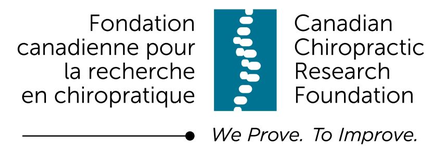We need your help to answer this question.
If you are interested in participating, please complete this Interest Form

Principal Investigators:
Dr. Martha Funabashi: mfunabashi@cmcc.ca - 416-482-2340 ext 714
Dr. Katherine Pohlman: kpohlman@parker.edu - 419-733-1129
Co-Investigators: Drs. Katie de Luca, Sheilah Hogg-Johnson, Silvano Mior and Diana De Carvalho
Project Coordinator: Dr. Joyce Lee - jlee@cmcc.ca - 647 265 4211
Introductory Video:
What are we doing?
This study aims to better understand how older adult patients' symptoms change after a chiropractic visit. This study will support patient safety within the chiropractic profession as well as clinicians to be proactive in advancing patient safety within their offices.
Why are we doing it?
Aging of the population is a global phenomenon, and Canada is currently experiencing a rapid growth of older age groups. It is predicted that in Canada, 25% of the population will be aged over 65 years by 2042. 1,2 The burden of musculoskeletal conditions and disability increases with age and contributes to 7.5% of the total global disease burden in those aged over 60 years.3,4
Chiropractic care plays an important role in treating older adults with musculoskeletal conditions. Specifically, the median annual utilisation of chiropractic globally is 9.1%,5 which increases to 15% in older adults.6 In Canada, 18.8% of patients who present to a chiropractor are older than 65 years.7 Despite the high use of chiropractic care by older adults and the high proportion of older adults as chiropractic patients, very little is known about symptom change and the safety of chiropractic care in this population.
How are we doing it?
Participating chiropractors are asked to collect data from 30 unique older adult patients (≥65 years old). This data will capture change in symptoms experienced by patients following a chiropractic visit, including potential adverse events (worsened or new symptoms). Patients will be asked to participate only one time in this study. For each participating patient, three electronic surveys will be asked to be completed: before, immediately after treatment and 2-7 days after treatment.
For each patient, you will be asked to complete one survey immediately after the patient's treatment to provide information about the treatment you provided. If an adverse event identified by you or your patients (and to which your patients agreed to have you reviewing their information) there will be one additional online questionnaire.
This active surveillance reporting system study is highly valuable as it provides not only the number of patients who reported adverse events, but also the ones who did not. By having these numbers, it is possible to have a better estimation of the adverse event occurrence rates following chiropractic care.
Questions?
If you have any questions or want additional information, please contact the study coordinator (Dr. Joyce Lee) at jlee@cmcc.ca or the principal investigators (mfunabashi@cmcc.ca or kpohlman@parker.edu).
If you are interested in participating, please complete this Interest Form
References
